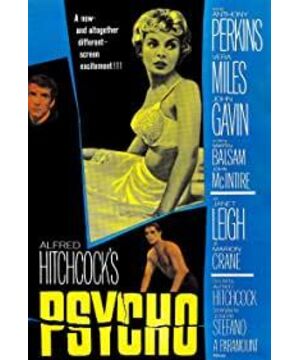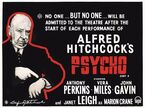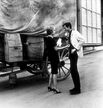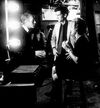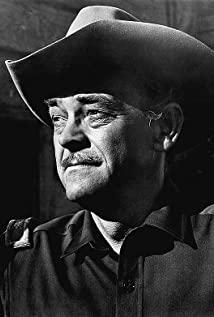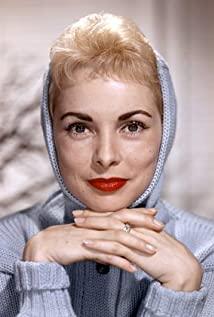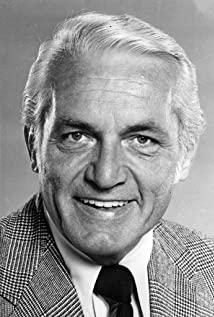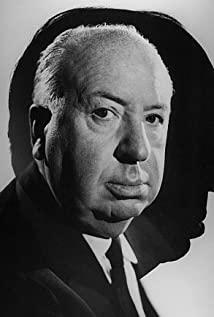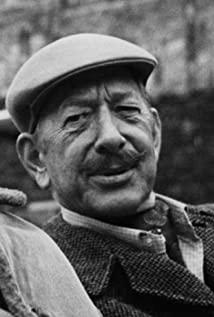Hitchcock entered the film industry as a set designer in the 1920s, and in the 50 films he directed from 1926 to 1976, he maintained close cooperation with the production design, maintaining the film's spatial set. High investment. Some of the lens languages he constructed in suspense that are inseparable from architectural space, such as stairs and windows, have become classic Hitchcock-style narrative languages, and have also become lens templates for horror and suspense in the future. In "Psycho", there are two most important buildings: Victoria's mighty old house and the miserable L-shaped motel bungalow, which also correspond to the most critical characters and plots in the film.
Victorian Old House: The vertical Victorian old house above the steps, vertical, with an upward trend in the vertical direction, symbolizing the old mother, high above, who has been controlling Norman in his subconscious, in absolute control status, and at the same time the house is lonely.
The shape of the house, very similar to Edward Hopper's "House by the Railroad", is undoubtedly inspired by Hopper. The house in Hopper's painting is not like a live space, not like a house with human activities, even if there is a railroad track in front of the house, suggesting that there will be changes coming, maybe a train will pass by, but it feels like this is an abandoned section of railroad track , the house was abandoned along with the railroad tracks. And it seems to be isolated from the real world by this railroad track.
The Bates Motel in the film is also so lonely, since the highway has been diverted, the hotel seems to be abandoned. Private investigator Arbogast investigated the whereabouts of the heroine, and when he arrived at the hotel, he said, "In the past two days, I have been to so many hotels, my eyes are almost blinded by neon lights, but this place seems to be hiding from the whole world. ." The detective said that the state of the Bates Motel is: isolated, isolated, and Norman's state. The sheriff said, "This guy lives like a hermit." Take a look at this painting by Hopper, and then look at the set of the house in the film. Even though there is a silhouette of a woman in the window, the loneliness and depression of being isolated from the world spread in this place. in the hotel. Edward Hopper, known as "the poet of empty spaces", is best at creating gloomy, oppressive atmospheres, albeit with particularly everyday scenes.
(Another painter, Chirico, has a similar temperament. In the work, empty arcades, elongated shadows, lonely people) In the interview, the screenwriter joked with Norman actor Anthony Perkins if he painted a picture of Norman Bates , also had to ask Hopper to draw. L-shaped low motel:
In American culture, the most everyday, unremarkable building, the cheap motel, doesn't feel like home in any way, and its grungy, taupe exterior resembles the equally bad low-middle-class shattered dream of the heroine Marion. . The secretary's boring job, longing for marriage, embarrassed love and bad financial situation, the ordinary and gloomy life is worthy of this motel where she lives. However, the decoration in Room 1 is quite loving, the wallpaper is fancy, the mattress and sheets are also quite attentive, it feels soft and intimate, and the furniture in the house also feels genuine and innocent, and the hanging is all Norman likes painting of a bird. In Hopper's paintings, he forces the viewer to change from a spectator's perspective into a voyeur, as Hitchcock had arranged for Norman. Norman cut a hole in the wall of the hotel and covered it with a painting. When the hostess changed clothes, he removed the painting and started peeping. (g in the picture above represents the Dutch painter's painting that Norman removed)
And the story in the painting that blocks the hole is also deliberately fitting. The 17th-century Dutch painter Frans van Mieris’s painting depicts this situation: Madame Susanna, the wife of a Hebrew from Babylon, was peeked at by two elderly eccentrics while she was bathing, and was forced to persecute her. How she is with them. Ms. Susanna firmly refused, but was later sentenced to death because the two strange uncles were so tongue-in-cheek. Fortunately, Ms. Su survived in the end. But unfortunately, the heroine, who was also peeped by Norman in the film, died.
In this bungalow hotel, the theme is voyeurism, Norman peeks at Marion, private investigators spy on him, and later Marion's sister and his boyfriend spy on Norman. However, Norman's old mother is always monitoring her son in her personality. A rhythm of a mantis cicada and a oriole. The city vision at the beginning of the film is also somewhat similar to Hopper's city.
In the city, orderly, but boring, cold windows are closed with more dense but lonely people
To quote a French architect from the film industry, Robert Mallet-Stevens:
What should the movie set look like? Just before the character enters the camera, you see this environment and you know what kind of person he is.
View more about Psycho reviews


